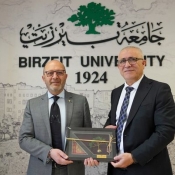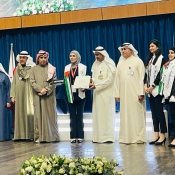Professor presents Device-to-Device communication tool for future cellular network
Computer Science Professor Ashraf Al Rimawi presented a new analytical framework model characterizing the coverage probability for cellular networks and Device-to-Device links in a March 21, 2017 lecture sponsored by the Department of Electrical and Computer Engineering.
Entitled “Analytical Characterization of Device-To-Device and Cellular Networks Coexistence,” the lecture analyzed the new model based on stochastic geometry to its coverage possibility, taking into account power control, path loss, and user random position.
Al Rimawi pointed out that some countries, such as South Korea, have begun to develop the fifth generation of networks. Still, they will not be in use until 2020.
“In recent years, user data traffic and the corresponding cellular network load are increasing exponentially. Most of this growth is being generated in indoor environments where service coverage is more critical.”
The solution for this, according to Al Rimawi, is to offload data traffic of cellular networks to Device-To-Device communication underlay cellular networks. “New heterogeneous networks (HetNets), comprising a mix of small and large overlapped cells, are being considered.”
Despite the new networks’ efficiency, the new spectrum creates challenges in interference management, including dependency on high frequencies and the limited distance by which the devices can stay connected without being attached to the main access point.






